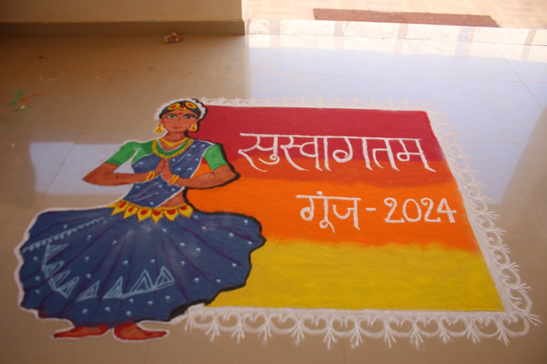 Web Mail Access
Web Mail Access
You are here
District Overview
Jashpur is situated in fertile plains of Chhattisgarh region. Jashpur district is officially formed on 6th July 2000 dividing the Raipur district currently the Capital of Chhattisgarh . Its head-quarter is Jashpur
It is said that the present name of Jashpur is one of the renowned district of the state and contributing the prominentrole to make the state "Rice Bowl." Dubraj and Madhuri are some famous rice verities whichare spreading their essence of not only the state but in whole India.
• Physical Features : I
• :
• Climate: The summer season of the district is hot and dry and the monsoon season brings enough rain. The average rainfall of the district is 1221 mm. The southwest monsoon starts from mid June and lasts till the end of September. The minimum temperature goes down to 5.5 degree C during winter season.
• Forest: Out of total area of 4084 Sq.km. of the district, 213123 hectare is forest land. There are three main forest ranges. Viz. Jashpur range. apart from Sal and Teak trees, there are other similar varieties of trees are Saj.Koha, Harra,Bija and Kumbi.
• Transport and Communications : The district is situated on National Highway-30 and it is well connected by road with state capital Raipur in the North and Jagdalpur (in Bastar district) towards South. The total lenght of National Highway in the district is 60 Kms
Geography
Jashpur is in the fertile plains of Chhattisgarh. The district's total area is 4,084 square kilometres (1,577 sq mi), and it is about 317 meters (1,040 feet) above sea level.
 Map of District - Jashpur (C.G.)
Map of District - Jashpur (C.G.)
Source of irrigation in Jashpur -:
| S.No. | Source | Area (in Lakh Ha.) | % of Total Irrigated Area |
|---|---|---|---|
| 1. | Canals | 59,298 | 39 |
| 2. | Tanks | 465 | 0 |
| 3. | Tube wells | 83,050 | 55 |
| 4. | Wells | 4,040 | 3 |
| 5. | Others (Rivers, Pokhars) | 4,100 | 3 |
| Total | 1,50,953 | 100 |
Basic Information in Jashpur -:
| S.No. | Subject | Details | |
|---|---|---|---|
| 1. | Total geographical area | 408.19 m ha. | |
| 2. | Total paddy cultivated area | 1.28 m ha. | |
| 3. | Total leguminous crop area | 3.73 m ha. | |
| 4. | Total oilseed crop area | 0.8 m ha. | |
| 5. | Others (Rivers, Pokhars) | 1,560 ha. | |
| 6. | Total vegetable crop area | 79.19% | |
| 7. | Irrigation by resources | 106.45 ha. | |
| 8. | Traditional crop area | 1.34 m. ha. | |
| 9. | Total forest area | 2,12,550 ha. | |
| 10. | Agriculture area | 1,40,050 ha. | |
| 11. | Grass land area | 15,570 ha. | |
| 12. | Irrigated area | 1,31,423 ha. | |
| 13. | Soil Types- (a) Matasi (b) Dorsa (c) Kanhar (d) Bhata (e) Kachhari |
27,749 ha. 23,960 ha. 74,415 ha. 7310 ha. 4,098 ha. |
|
| 14. | Rain Fall | 1221 mm. | |
| 15. | Main Crop | Paddy & Vegetable | |
| 16. | Population (a) Male (b) Female |
||
| 17. | Literacy Rate | 78.95% | |
| 18. | Sex Ratio | 1000:1012 | |
| 19. | Tehsils | ||
| 20. | Blocks | ||
| 21. | Total Village | ||
| 22. | Pin Code | ||
| 23. | STD Code | ||
| 24. | Vehicle Code |









